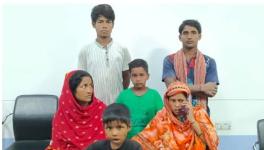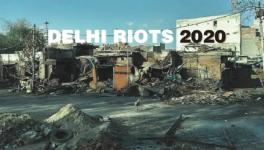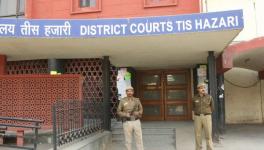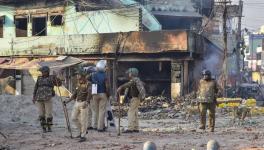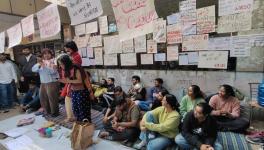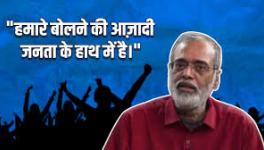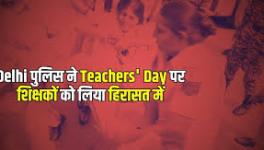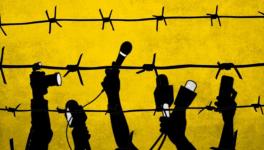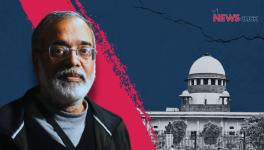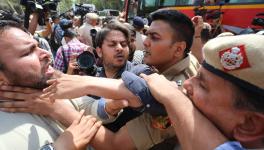Delhi Police Never Learned From its Failure in 1984 Anti-Sikh Riots
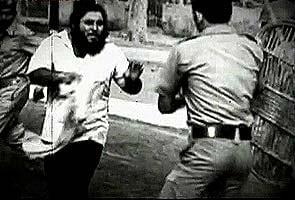
Image courtesy: NDTV
Thirty-eight years, four commissions, nine committees and two Special Investigative Teams. A well-planned massacre of Sikhs in Delhi in 1984 is a historical example of how the judiciary, political and police systems can make a mockery of democracy. But the biggest dishonour was of the police force which was supposed to protect people. All commissions that investigated the killings of 2,146 Sikhs during the five-day holocaust are critical of the Delhi Police. Instead of safeguarding unarmed, helpless, innocent Sikhs from mobs of killers, Delhi Police played the role of co-rioter.
This writer, then a 14-year-old son of a turban-wearing Sikh, saw five policemen sipping Goldspot, a popular soft drink, as they watched a crowd loot and burn down a swanky footwear showroom owned by a Sikh, outside lane number seven in Govindpuri Extension, Kalkaji, on the evening of 2 November. Yet Delhi Police repeated its 1984 performance during the 2020 riots in Delhi. Visuals available on social media clearly show the police helping rioters.
Retired Indian Police Service officer Amod Kanth was the Delhi Commissioner of Police (Central District) when the 1984 riots broke out. All the commissions—except the Nanavati Commission, which made some critical remarks—praised Kanth for his role in containing violence in the most sensitive area of the capital. Kanth, who wrote the book, Khaki in Dust Storm: Communal Colours, Political Assassinations in the 1980s and 1991, feels the 1984 riots were the result of the failures of the leadership of the police force and that the same situation repeated itself during the 2020 riots. He now runs the NGO, Prayas. Edited excerpts of an interview.
Thirty-eight years have passed now since the riots. How do you look back when you hear the words, 1984 riot?
The 1984 riot was a life-altering event for me. I was DCP Central District then, with two historic gurdwaras under my jurisdiction. You can check the records: only Central Delhi received plenty of positive reports from investigations by all commissions. The Rang Nath Mishra Commission and Nanavati Commission concluded that if led by ‘Amod Kanth, DCP central district’, the riots could have been contained in the best possible manner. I feel the 1984 riots were like a tornado. Honestly, I was not the same person on 5 November as on 31 October. I was never the same after those riots. Looking back, it was the most life-changing event of my entire life.
During the 1984 anti-Sikh pogrom, Delhi Police failed to show any character as a force the nation’s capital deserves. You were part of the system. I think you can tell better why and how it failed.
When the 1984 riots occurred, the police had just about 32-35 Police Control Room (PCR) vans spread across the city. Its manpower was also low. Delhi Police was not only extremely ill-equipped but also totally unprepared. We had a leader, Subhash Tandon [Delhi Police Commissioner during the riots] who happened to be a man from the Intelligence Bureau. I’m talking professionally here; Subhash was a decent man and a good human being, but he was a total failure as a leader. That is his part in it. We had only six districts during that time, and now we have 15 in Delhi.
Is it true that your district was also considered the most sensitive during the 1984 riots?
Yes. The most critical district was Central Delhi because it had the highest number of gurdwaras. Yet the total casualty reported in my district was 18. For five days, I was continuously out on the streets. And let me inform you that in the central district, the casualty of Hindus was more than Sikhs because the police opened fire to control the mobs. The other thing was that nearly half my district’s Station House Officers (SHO) were Sikhs. One of my biggest problems was protecting those Sikh officers and not allowing them to return to their homes so that they could do their work in the field. Some got severely injured, but I did not let them down. I am still in touch with those officers. So, the 1984 riots are a very different thing for me. But the fact [people still don’t understand] is, when such an unfortunate massive storm comes, it leaves nothing in its wake.
Do you think Delhi Police have learnt anything from 1984 failures? After all, the 2020 riots happened, and the police are on the firing line again, facing allegations of allowing rioters to kill people and damage properties.
I keenly followed all the developments during the February 2020 riots in Delhi. I think the police performance was terrible in the 2020 riots. At that time, the police had no business failing. They failed because of the leadership. I think the Commissioner of Police was a total failure this time as well. But the 1984 and 2020 riots are not the same thing: The full size of the force was more than 85,000 in 2020. Delhi Police had 4,000 to 5,000 PCR staff strength in 2020, and 800-900 PCR vans which are fully equipped with the manpower, weapons, and everything else the force needed. So there was a world of difference from 1984. Then it had only 30-50 PCR vans. In 2020, the police could have controlled the situation. I think the wrong kind of people were allowed to handle the situation. The police failed to stop the hate speeches made by political leaders, and following that, all sorts of reactions took place. It all happened within the gaze of the police. The Delhi Police failed terribly in 2020: I am very clear about it.
You said you were on the ground for five days during the 1984 riots. Do you still remember those five days?
My wife was traumatised, and by that, I mean really traumatised. My family took the events of those days very, very seriously—it was as much a trauma for them as for me. I got injured several times during that period. I must have opened fire several times. I must have conducted lathee charges many times. I must have dispersed at least 100 crowds. Fortunately, all this was part of the record, but only the central district had such a record.
(Jasvinder Sidhu is an independent journalist.)
Get the latest reports & analysis with people's perspective on Protests, movements & deep analytical videos, discussions of the current affairs in your Telegram app. Subscribe to NewsClick's Telegram channel & get Real-Time updates on stories, as they get published on our website.









